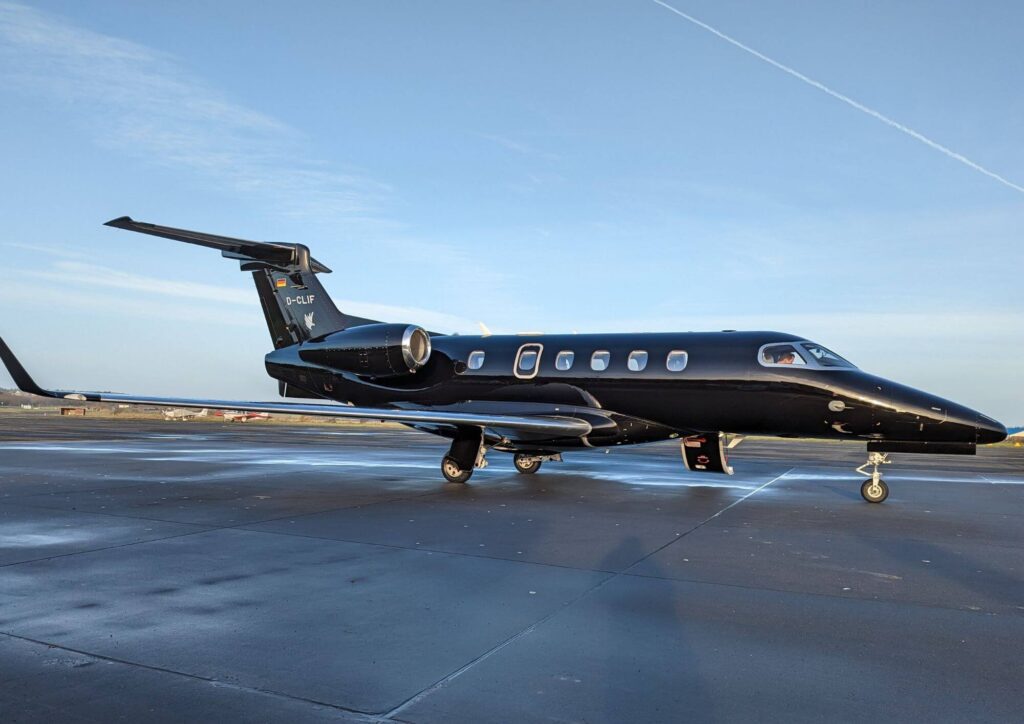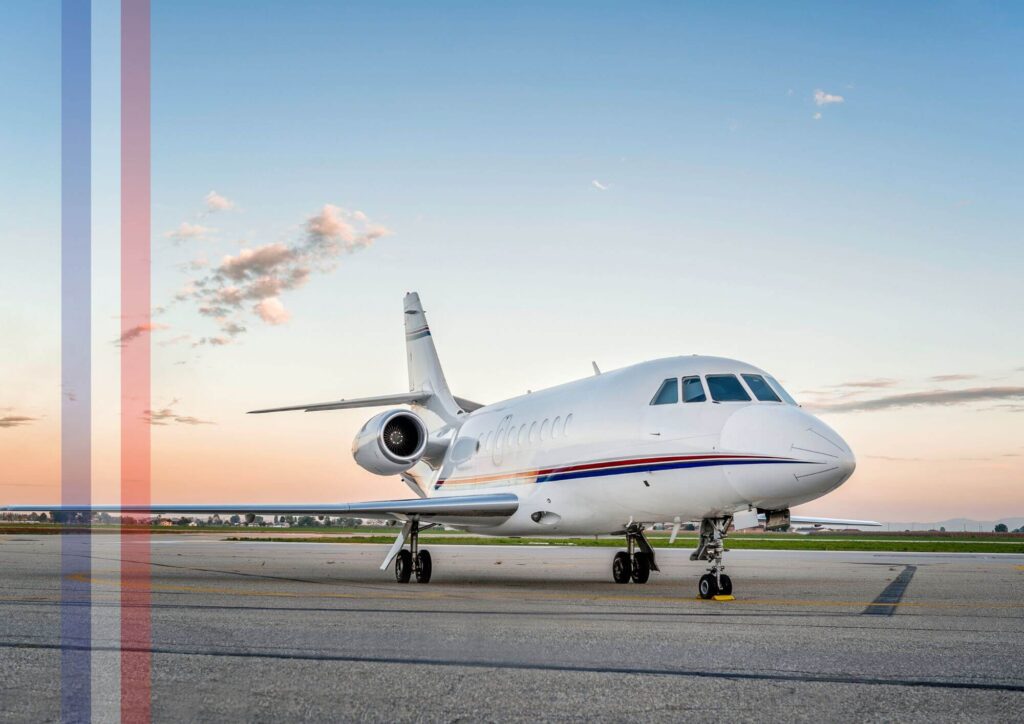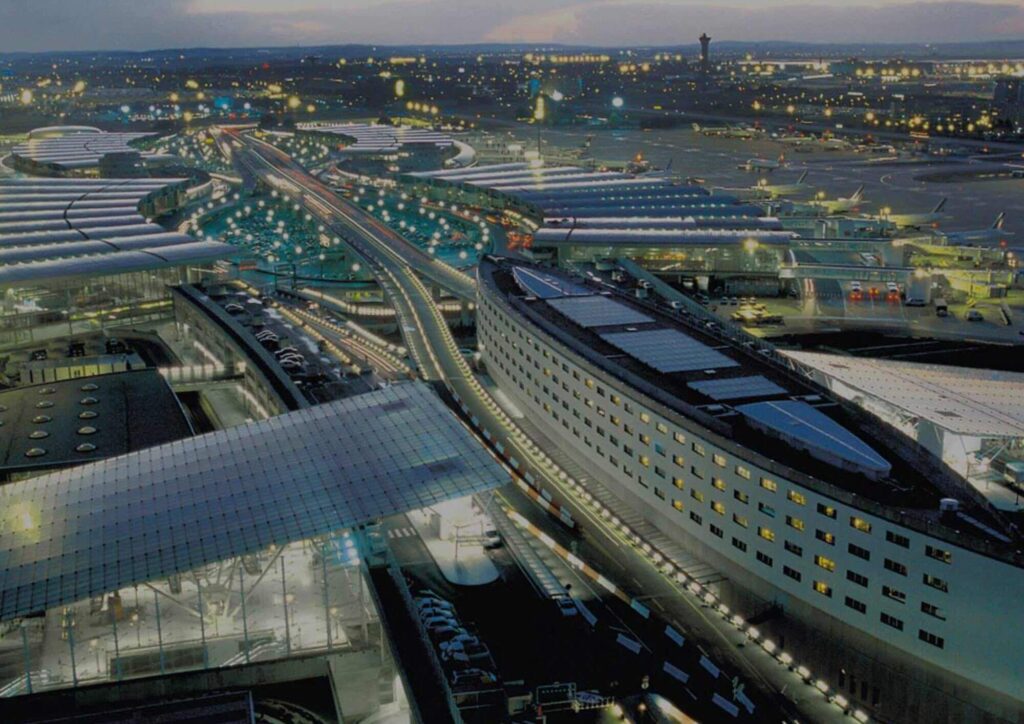The new French tax on private jet travel marks an unprecedented 300% increase in passenger fees, specifically targeting luxury air travel starting March 1, 2025. According to government estimates, passengers will face charges ranging from €210 to €2,100 (approximately $2,200) per person, depending on their flight distance.

France Implements Highest Private Jet Tax in Europe
Tax Rates & Destination Categories
The tax applies only to flights departing from France (not on arrivals). The tax is based on the distance between Paris CDG and the main airport of the destination country’s capital, meaning the same tax applies across the entire destination country, regardless of the departure airport in France. Distance categories:
Business Aircraft with Jet Engine:
- €420 – Flights to European destinations & other countries within 1,000 km.
- €1,015 – Flights to intermediate destinations (Between 1,000 km and 5,500 km).
- €2,100 – Flights to long-haul destinations (Above 5,500 km).
Business Aircraft with Turboprop:
- €210 – Flights to European destinations & other countries within 1,000 km.
- €675 – Flights to intermediate destinations (between 1,000 km and 5,500 km).
- €1,025 – Flights to long-haul destinations (above 5,500 km).
According to the aircraft eligibility, the tax applies only to aircraft with up to 19 seats (based on MOPSC). Fruthermore, private flights will be exempted, but the exact criteria for proving a flight is private (beyond the flight plan in IG) are still pending. Technical/Fuel stops will not be taxed if they are for technical or fueling purposes.

The European Business Aviation Association (EBAA) has pointed out the unfair impact of the new tax on short-haul flights. For example, six travelers on a Cessna Citation CJ2 flying within France could face €7,500 in taxes on a €12,000 charter, while two passengers flying from Paris to Tokyo would pay €2,100 each, despite the higher cost of the long-haul flight.
The french tax enforcement will be strict, and operators who fail to collect the correct amount could face significant fines and retroactive assessments for up to three years, leading to payments of millions of euros.
The French business aviation sector, supporting 101,500 jobs and generating €32.1 billion, primarily serves essential purposes, with 90% of flights used for business or organ transport. The government expects to generate up to €900 million from this tax, but critics, like business professor Emmanuel Combe, argue it’s poorly planned, especially since no revenue has been earmarked for decarbonization.
French tax : Private Aviation Industry Warns of Economic Fallout
Industry leaders are raising serious concerns about the economic impact of french tax, with the European Business Aviation Association (EBAA) projecting potential losses of up to €120 billion in foreign investments and 104,000 jobs across the EU by 2030. These estimates are based on an Oxford Economics study assessing the potential fallout from anti-private jet legislation.
Charles Aguettant, chairman of EBAA France, highlights that this tax represents a massive 300% increase in passenger fees. The association emphasizes that only 10% of private jet departures in France are for leisure, with the vast majority supporting critical activities such as economic growth and medical missions. The tax is seen as detrimental to essential operations across multiple sectors.
The repercussions are expected to reach beyond aviation services. The french tax threatens the entire business aircraft support ecosystem, impacting fuel services, Fixed Base Operators (FBOs), and suppliers. This disruption could result in significant job losses across France’s aviation sector, which currently employs thousands of people.
The tourism industry is also at risk, as private jet users contribute up to 25% of revenues at luxury resorts. Similar to Italy’s 2012 yachting tax, this new levy could cause significant losses. Additionally, IATA is concerned about France’s slow aviation recovery post-pandemic and questions the government’s strategy, especially with its goal of attracting 100 million tourists and transitioning to sustainable aviation fuels. The EBAA is seeking clarification, arguing that there is no justification for the disparity in tax treatment between commercial and business aviation.

Operators Devise Creative Solutions to Navigate New Tax
Private jet operators across France are preparing for significant changes as the March 1, 2025 deadline approaches. Many are updating their pricing to account for the new taxes, with some considering alternative routes through neighboring countries.
GlobeAir, a leading charter operator, explains that for European destinations, the tax is €420 per passenger, excluding VAT, while domestic flights within France incur an additional 10% VAT, bringing the total to €462.
To navigate these challenges, operators are focusing on strategic route planning and efficiency. Trip support teams are working closely to ensure the correct tax application and explore potential cost-saving route adjustments.



A key aspect of the tax calculation is its use of distance from Paris Charles de Gaulle airport (LFPG), rather than actual flight distances. This standardized approach simplifies calculations but adds complexity for operators. Fractional flights, cargo flights, and helicopters may be exempt, but operators are awaiting official confirmation from authorities.
Operators must self-declare and submit tax payments by month’s end. Some handlers and FBOs are offering tax management services to assist with compliance. With enforcement tightening, non-compliant operators could face retrospective assessments. French overseas territories maintain their 2021 tax rates, and some operators are considering rerouting flights there to reduce costs.
The government expects to generate €800-€850 million from these new taxes, but the actual financial impact on the industry and government revenues remains uncertain as operators adjust.
Conclusion
French tax marks a major shift in European aviation policy, with a 300% increase ranging from €210 to €2,100 per passenger. This tax significantly impacts critical operations, as 90% of private flights are for business and medical purposes, not leisure.
The economic stakes are high. While the French government expects €1 billion in additional revenue, experts warn of potential losses up to €120 billion in foreign investments. As a result, operators are exploring creative solutions, including strategic route planning and potential exemptions for specific flight categories.
The long-term effects of this tax on France’s aviation sector, which supports 101,500 jobs and generates €32.1 billion, remain uncertain. The success of this policy depends on how well operators adapt and whether the benefits outweigh the risks. As March 2025 approaches, both the government and industry must closely monitor these changes to ensure France remains a key hub for European aviation.




